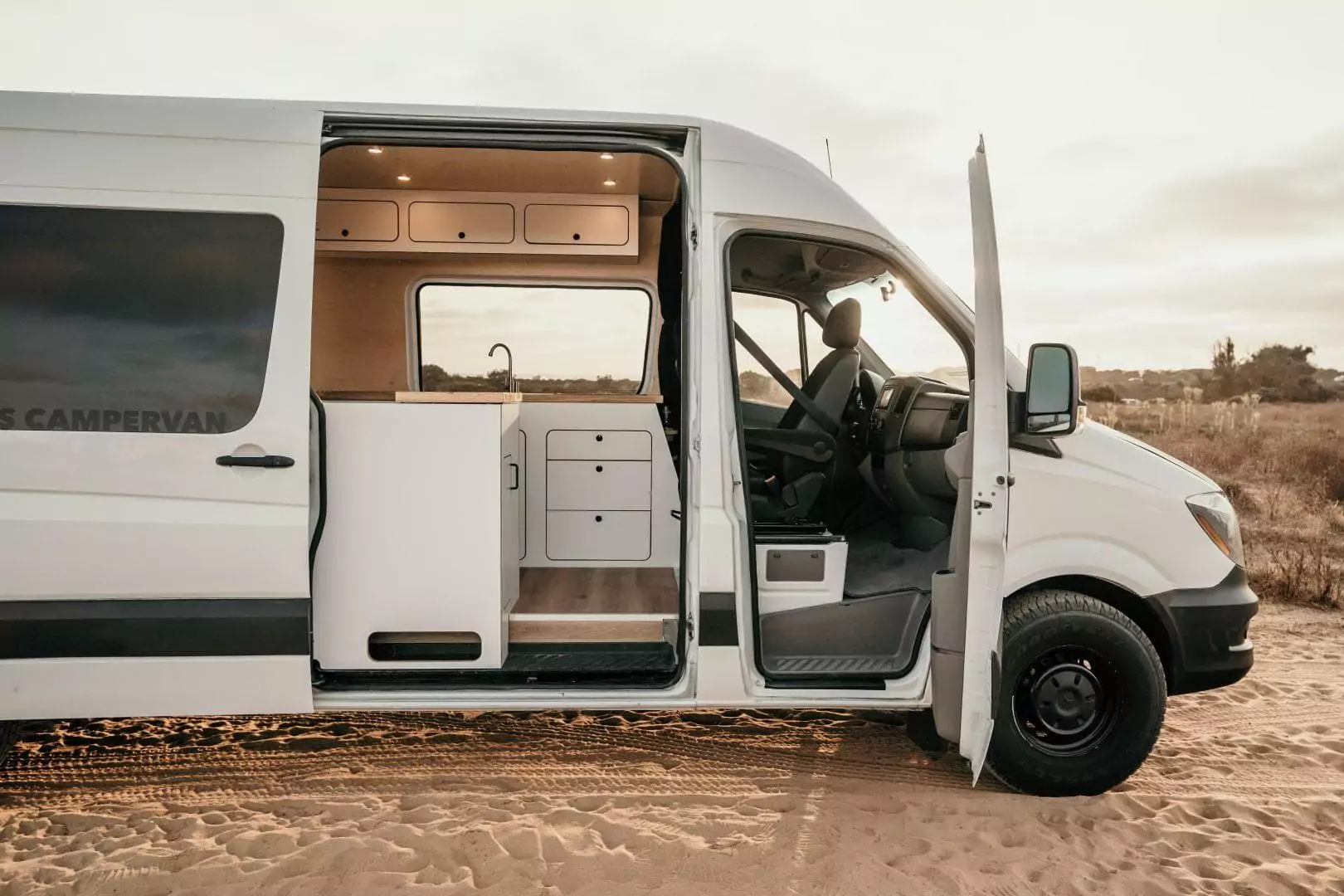If you’re interested in off-grid Sprinter campervans and learning why they’re a much better travel alternative than their clunky RV counterpart, you’ve come to the right place.
Warning: this article may encourage the impulsive purchase of a used cargo van.
RVs have been America’s most popular extended-travel vehicle for over 100 years. That is until the campervan made its grand re-entrance (thanks to social media) less than a decade ago. The campervan is the cooler, more talented, better-looking cousin of the RV. Today, we’re going to give you 8 reasons that prove our point.
#1: Size Really Does Matter After All…
If you had to break down the difference between a campervan and full-size RV into one word, it would be size. The implications of this are far-reaching (which we will cover shortly). Campervan conversions are typically performed on RAM, Ford, and Mercedes cargo van chassis. Short wheelbase campervan chassis range 18’ to 19’ bumper-to-bumper, while long-wheelbase chassis range from 20’ to 22’. Class A and Class C RVs range from 29’ to 41’ in length, on average. Check out this article for more information about prepping for the minimalist lifestyle.
Let’s not forget about width, which also significantly impacts drivability and convenience. You can expect a standard full-size RV to be a full 2 to 3 feet wider than a campervan. Good luck keeping that bad boy in between the lines on those long road trips. You can find a full size-breakdown summary chart below.
Please note the campervan size data is referring to RAM, Ford, and Mercedes full-size, high-roof cargo van chassis.

#2: Fuel Consumption
Whether you’re more concerned about the carbon footprint or fuel costs, campervans are significantly more fuel efficient than their RV counterparts. Vehicle weight, model-year, chassis aerodynamics, and engine-type all play a role in determining a rig’s fuel economy.
We prefer diesel over gas engines, given the longevity and better fuel economy; however, there are perks to having a gas vehicle. Some of those perks include a lower cost per gallon and reducing the risk of blowing up a diesel engine by pumping it full of gasoline (yes, we’ve experienced this).
Campervans will get anywhere from 20 to 28 mpg on the highway, while their gas-guzzling RV counterparts boast an impressive 8 to 12 mpg on the highway. It’s simple – save the planet (and your wallet), drive a campervan.

#3: Self Sustained & Off-Grid Sprinter Campervan Electrical System
This might be one of the most misunderstood differences between a campervan and its Class-A & C RV counterparts. VanCraft’s ‘no-compromise’ Sprinter campervan has an off-grid solar electrical system, which means you never have to plug it in to recharge. Instead, it harnesses the power of the sun, via solar panel, and directs that energy to a hefty battery bank, which stores and delivers consistent and sustainable power to the cabin appliances.
If you’re the type of traveler who enjoys the flexibility of going wherever you want, whenever you want, then an off-grid campervan might be for you. Not only does an off-grid electrical system allow you to avoid costly campsite fees, but it also allows you to wake up to some of the world’s most epic views. The far-reaching implications of this are largely underappreciated, but hopefully, these photos give you a good idea of why this is such a nice feature.
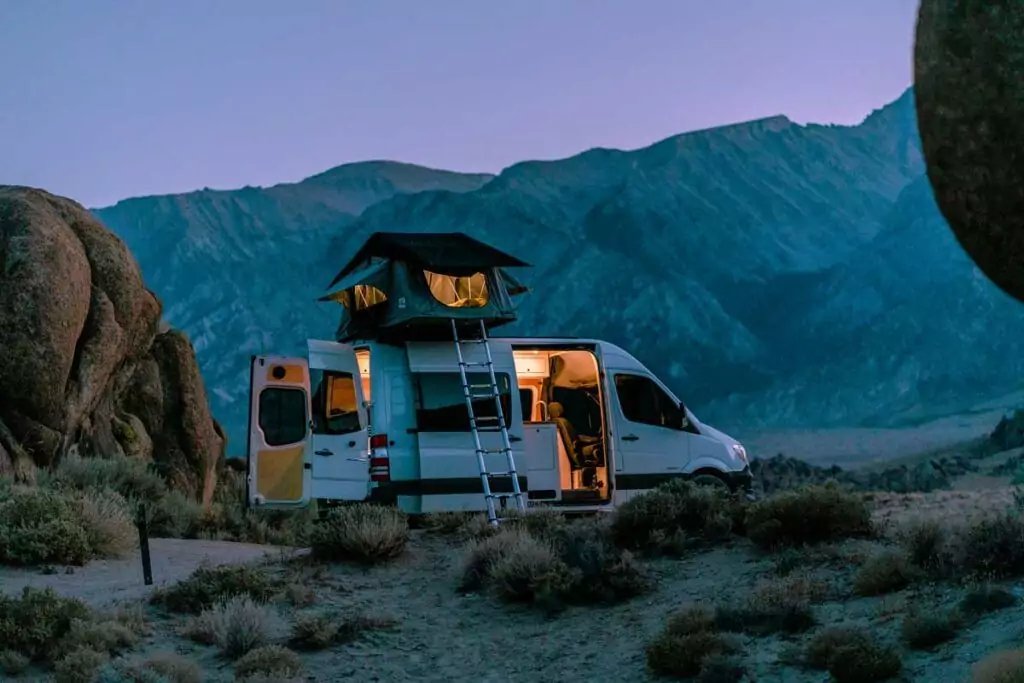
#4: Get Off The Beaten Path
Picture this; you’ve just finished a long day of skiing at Mammoth Mountain, and you want nothing more than to go relax in a natural hot spring until your body fully thaws out. So, you hop in your campervan, which is conveniently parked at the base of the gondola station (now THAT’S ski-in/ski-out) and head to Travertine hot springs, which is just outside of town. You get to the final mile of unmaintained, mountainous dirt roads and realize that your cabin-on-wheels is climbing through the snowy mud effortlessly, if not a little bumpy. Unfortunately, RV travelers are confined to the limitations of moderate, wide paved roads.
Higher rear axle clearance, lighter load, and 4×4 configurations open up a whole new world of exploration opportunities for campervan travelers. Yes, there are some sacrifices you have to make along the way, but they are well worth it.
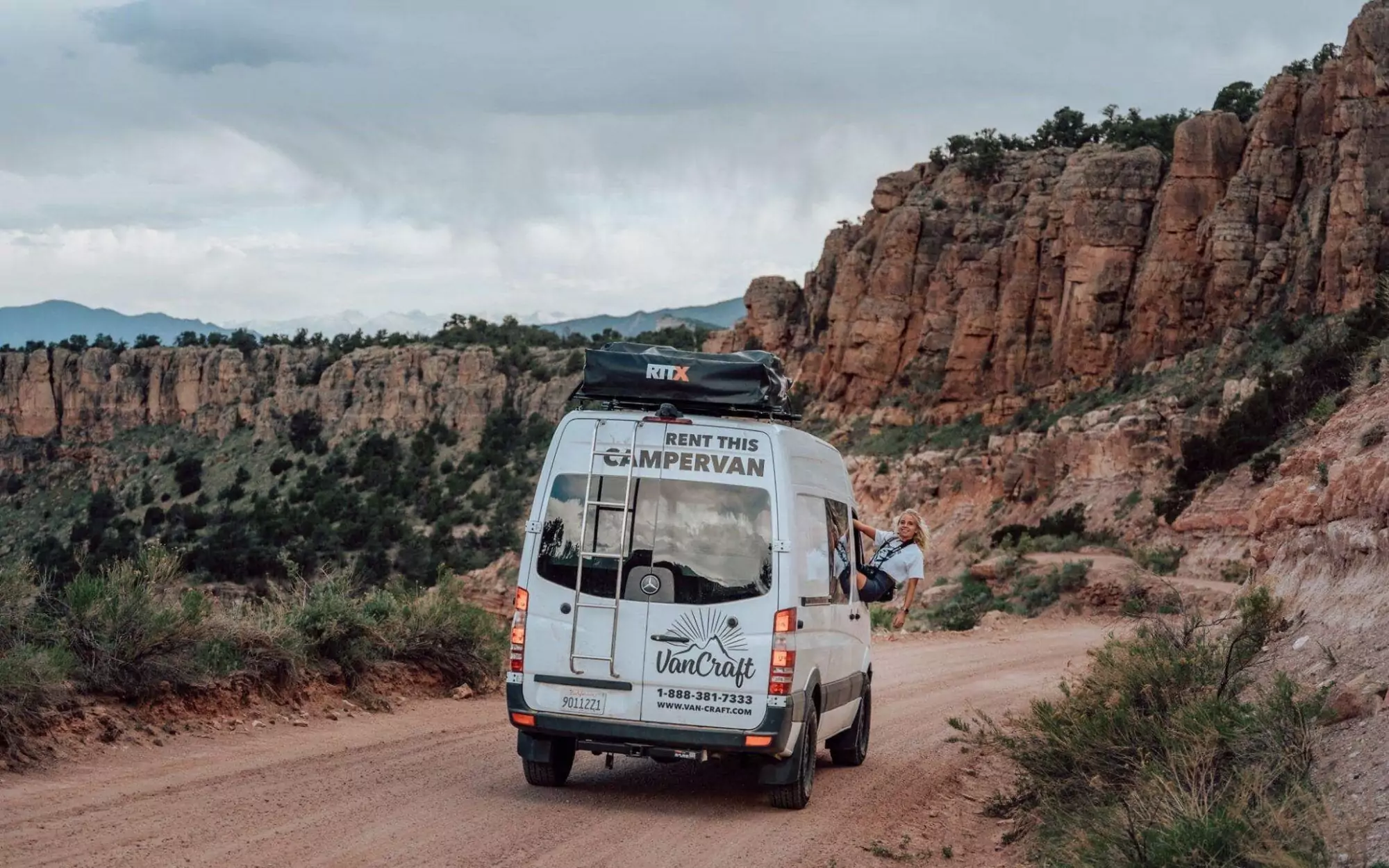
#5: Simply Functional
Speaking of sacrifices, did we mention campervans typically only have 30-40% the square footage of their RV counterparts. That means campervan manufacturers are forced to be very creative with their use of space.
Campervans challenge the traditional RV layout by embracing simplicity and functionality. Instead of bulky holding tanks, smaller water storage alternatives are used to cut down on weight and waste. Instead of an integrated full-size bathroom, a smaller portable toilet can be stowed inside the cabin, in case of an emergency. Indoor showers are replaced with outdoor showers, which opens up the cabin and reduces the risk of interior condensation. Aside from losing your bathroom and some square footage, a campervan offers much of the same functionality as a full-size RV, just on a smaller, more efficient scale. Below is an illustration of our long wheelbase Sprinter campervan layout.
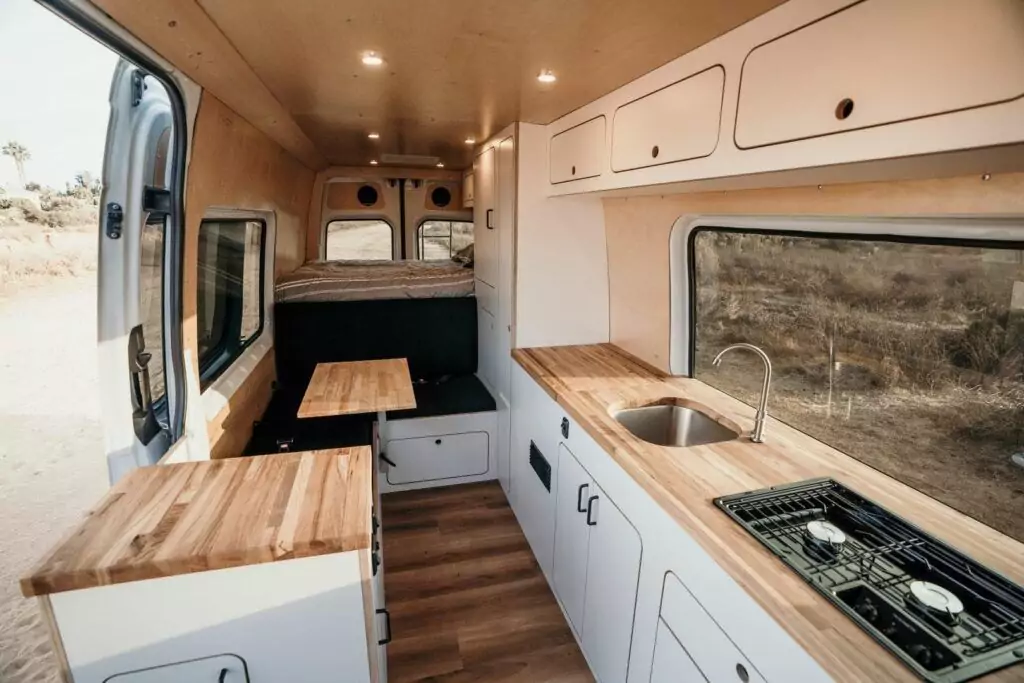
#6: Conveniently Stealthy
It’s a plumber, it’s a carpenter, it’s my delivery dude! No, wait… it’s a fully off-grid, custom Sprinter campervan. There’s no mistaking an RV for anything other than a house built on an extended truck frame. On the other hand, a campervan can easily be mistaken for a commercial cargo vehicle.
There are very subtle differences between a campervan and an unconverted cargo van chassis. To the untrained eye, a white Sprinter campervan looks the same as any old handyman’s white Sprinter cargo van. Campervans can fly under the radar and have access to, seemingly, limitless parking options. This enables a campervan to double as a fantastic daily driver option. They’re comfortable to drive, get great fuel economy, and have no problem fitting into a standard parking spot. Plus. imagine all the mid-day naps you could take during lunch breaks… Hopefully, this helps you justify including that coveted off-grid adventure mobile into your next vehicle search!
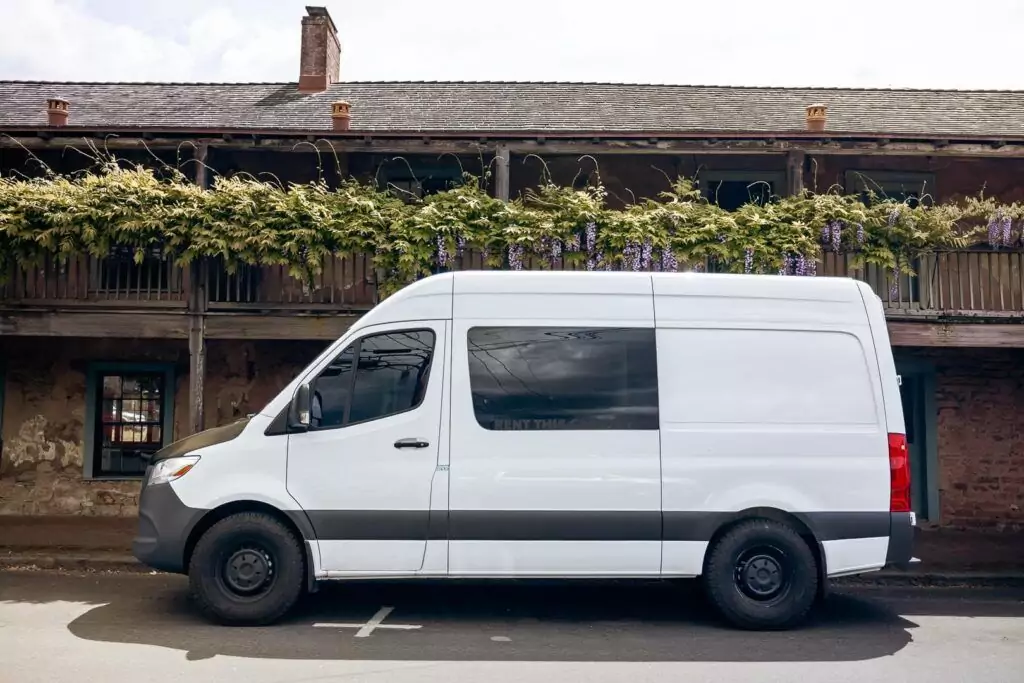
#7a: The Cost [Renters]
To make an apples-to-apples comparison between the cost of a campervan and RV trip, we delved into the world of rentals. We analyzed a handful of different variables and ultimately concluded that campervans are a much more affordable way to travel. For good measure, we also threw some smaller alternative camper vehicle options into the mix. The illustration below was created by pulling cost data for a 1-week mid-summer trip from various campervan and RV rental companies. It’s no wonder campervan rentals are taking significant market share from the RV rental industry.
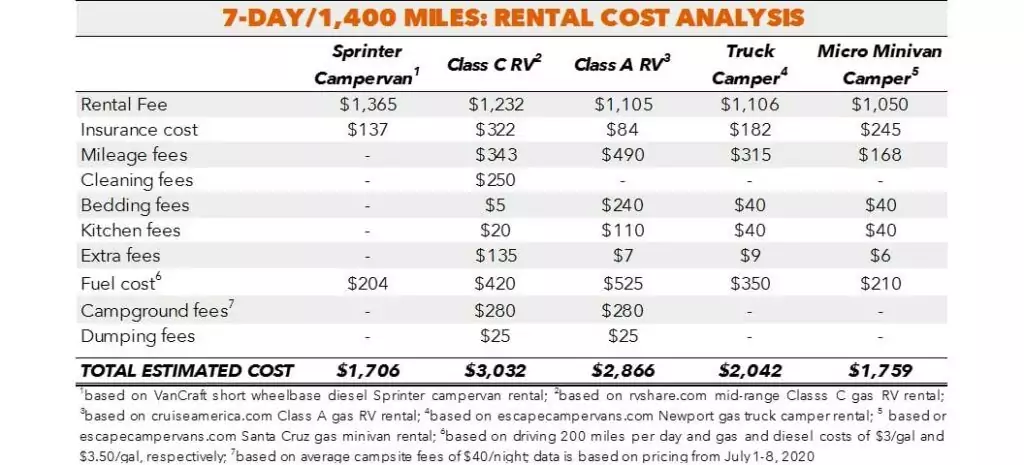
#7b: The Cost [Owners]
Below, we break down and compare the raw travel costs for Sprinter campervan and RV owners. Notice we exclude certain obvious costs, like insurance, tolls, entertainment, and debt service in efforts to keep it as simple and comparable as possible. Another glorious victory for the campervan.

#8: Waking Up To That View
Imagine being able to wake up to breathtaking views from your secluded private camp spot every morning… Anyways, someone really smart once said, “a picture is worth a thousand words” so we’re gonna shut up now.
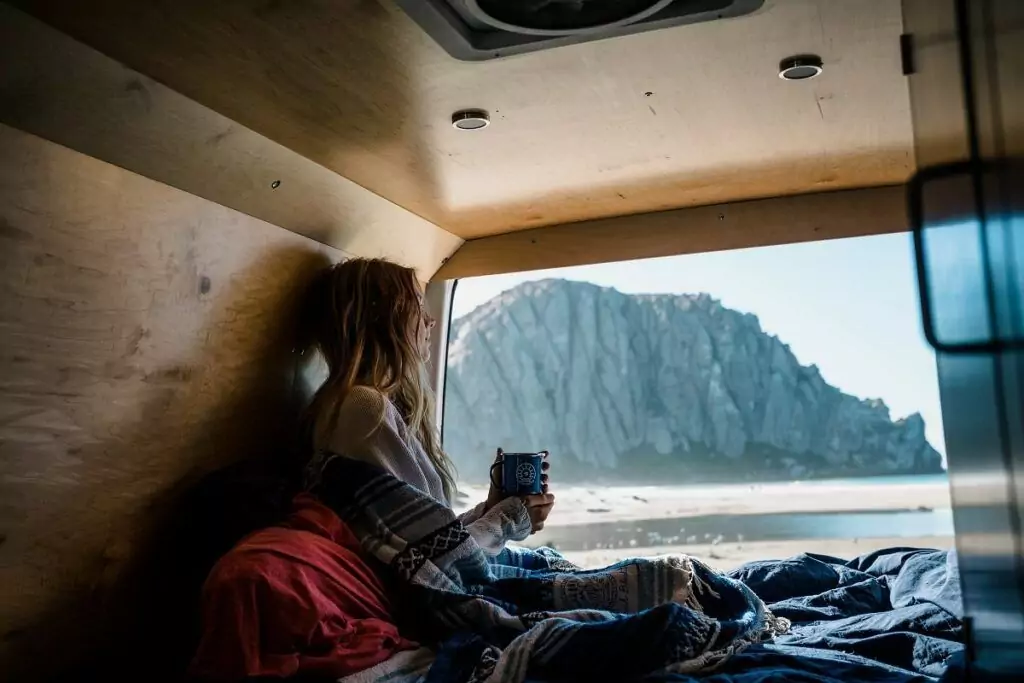

“Travel isn’t always pretty. It isn’t always comfortable. Sometimes it hurts, it even breaks your heart. But that’s okay. The journey changes you; it should change you. It leaves marks on your memory, on your consciousness, on your heart, and on your body. You take something with you. Hopefully, you leave something good behind.”
– Anthony Bourdain

